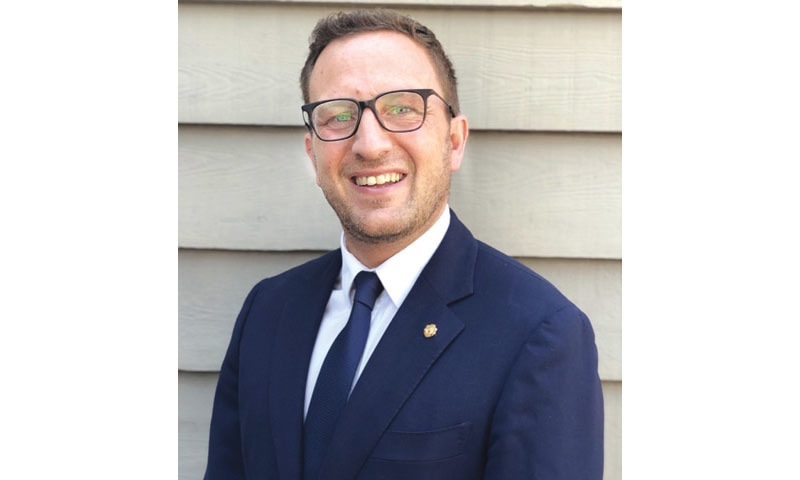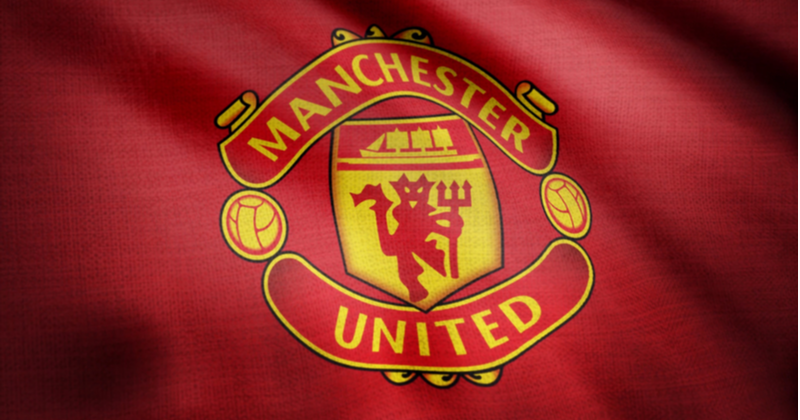How to build a great sports brand
Published in Jan-Feb 2020
ANUSHA ZAHID: When and how did you join Manchester United (MU)?
VENGE KOURENTIS: After finishing my studies, I joined a small, London-based boutique advertising agency; one of our clients was a jeans brand. They offered me a job, and I ended up working with them for two years for a number of brands, including sportswear. We pitched concepts to several football clubs for co-branding opportunities, including MU. When they saw our proposal, which we presented to them as a 50/50 joint venture, they ended up buying the company and I moved to Manchester in 1996 and became part of MU.

AZ: Which factors contributed to MU’s global popularity?
VK: Before the Munich air crash in 1958 (which killed seven MU players in addition to the team’s coach, trainer and secretary), MU was more of a local football club and its popularity was largely restricted to Manchester. After the crash, the Club captured the imagination of the entire world as there was empathy for those members who had perished. Ironically, the air crash was the start of a fantastic journey for MU as a business and as a brand. As time went on, other factors came into play that contributed to its success. For example, in 1992, the Premier League was formed which represented all 20 football clubs that existed at the time in England, and this had an impact in furthering the visibility of football across the world.
"Sky Sports won the initial bid for domestic TV rights and this revolutionised sports broadcast"
AZ: How so?
VK: For one thing, they started the bidding process for the broadcast TV rights; Sky Sports won the initial bid for domestic TV rights and this revolutionised sports broadcast because Sky introduced more cameras in addition unique angles which made the game more exciting to watch. Eventually, MU became the most popular and most watched team of the Premier League.
AZ: In your presentation at AdAsia 2019, you mentioned that MU is in the ‘escapology business’. Could you elaborate on this?
VK: While working on building the MU brand, we had to decide a mantra for the business we were in. We did not want to be just a football team, because it was too restrictive. We decided to go into the ‘escapology business’, because it gave us a broader view and exposure. We wanted to dedicate ourselves to our fans who meant everything to us. The thought stemmed back to the time, 50 to 60 years ago, when football was considered ‘a working class game’. At that time, matches always took place at three on Saturdays afternoons, to ensure that factory workers could attend them. During those 90 minutes of the match, people were entertained and forgot their daily toils. Alex Ferguson (the manager of MU 1986-2013) always reminded players that they should also entertain people and that continues to be the guiding force in everything we do for our brand today.
AZ: What sort of changes did you implement during your time with MU?
VK: We wanted to be a modern, customer-focused business and, in the process, become the best football club – both off and on the pitch. Our vision entailed turning our fans into customers. We designed and opened a museum at Old Trafford (a football stadium which is considered the home MU) in 1998 to demonstrate what our brand stood for, and nearly 300,000 people visit it every year. It is now considered to be Manchester’s biggest tourist attraction. During his time as MU’s manager, Ferguson used to take prospective players to the museum to show them MU’s history and heritage and see how they reacted and responded to it before making the decision to recruit them, instead of just basing his decision on their talent only.
AZ: What other changes did you implement?
VK: Until 1996, at least 25 different variations of the club crest were used at the same time. We decided to settle on one. This was also when the name Manchester United came into being; previously it was called the Manchester United Football Club. Of course, fans didn’t like this at the time (people are often against change) but we went ahead. In 2006-07, we expanded the stadium to increase the capacity to 75,000 people, thus making it the largest football stadium in England. We were also the first club to have a fans forum, where once every quarter the board would meet fans and discuss issues about the Club.
AZ: What role did partnerships and sponsorships play in MU’s growth?
VK: Developing strategic partnerships was key to moving ahead and this required engaging with even more fans across different geographies. We now have several successful partnerships to our credit. For example, we created a subscription-based TV channel MU TV in partnership with Sky. We introduced the concept of having one principal sponsor (Platinum) in addition to six or seven smaller ones. In 2000, we collaborated with Pepsi in Thailand to create an on-camp promotion that allowed four winners to visit Old Trafford to meet the team. Fifteen million people entered (a quarter of their population) and this campaign went to Cannes. Clearly, Pepsi could not have done it by themselves. Ultimately, sponsorships are important because the revenue we generated allowed us to reinvest in the team to get better players and coaches.
AZ: What was the rationale behind international expansion through retail?
VK: To generate revenue primarily. We also wanted to get out in a physical way (much like the museum) and reach fans who could not come to Old Trafford. Watching a match on TV or online doesn’t touch all your senses... only a physical experience can give you goose bumps. I was part of the team that was responsible for establishing ‘MU retail experiences’ such as bars, restaurants and retail stores in Africa and South East Asia, especially China; places where we had a lot of fans. When I joined the Club, the merchandising division constituted 120 people who designed, produced, manufactured and distributed sportswear. By building stores around the world, we energised a traditional business into one that became recognised around the world. Eventually, we sold the business to Nike for £302 million over a 13-year deal. At the time it was the largest corporate deal in sports history; profits consequently increased from one million pounds to £23 million a year.
AZ: How can sports brands stand out and enhance their fans’ experience through content?
VK: I think they have to be cleverer and think beyond commercial partnerships with major brands and organisations. For example, Major League Soccer (MLS in the US), realised about eight years ago that to become more popular, they had to engage a younger demographic. So they did something really clever. They started a YouTube channel called Kick TV and did not use MLS branding in any way. As far as fans were concerned, Kick TV was a fan-inspired YouTube channel with fan generated content. MLS owned it completely and invested a million dollars in it every year. Slowly, they subtly put commercial messages in the content such as “buy more tickets” and “get this shirt”, etc., to monetise it. Three years ago, they sold Kick TV to Copa90, the biggest soccer YouTube channel for $10 million. (They retained five percent and continued to influence the conversation among their fan base.) Surprise, surprise... what was the outcome? MLS now have the youngest and fastest growing fan base and the most dynamic business.
AZ: What is the way forward for sports brands to engage a younger generation?
VK: In order to thrive in the modern world, brands have to be a lot more fan-centric and authentic because Millennials and younger people align themselves to brands more readily if they have a social conscience and ‘give back’. This sentiment will only increase over time. Furthermore, brands should also realise that their fans are their brand ambassadors; if the fans create content they will be able to create more engagement between other fans for their brand – they are the real influencers.
For feedback: aurora@dawn.com

Comments (0) Closed